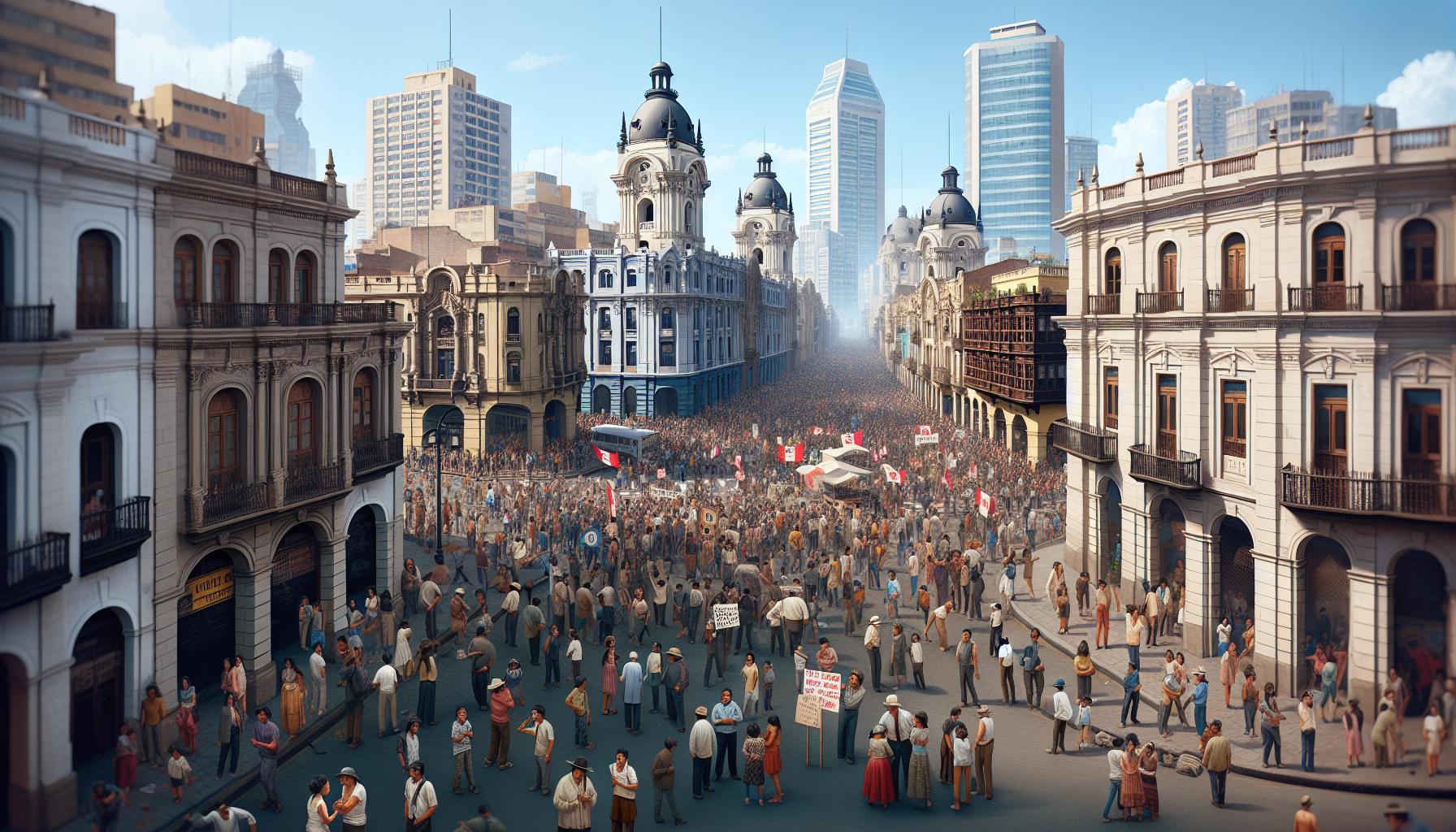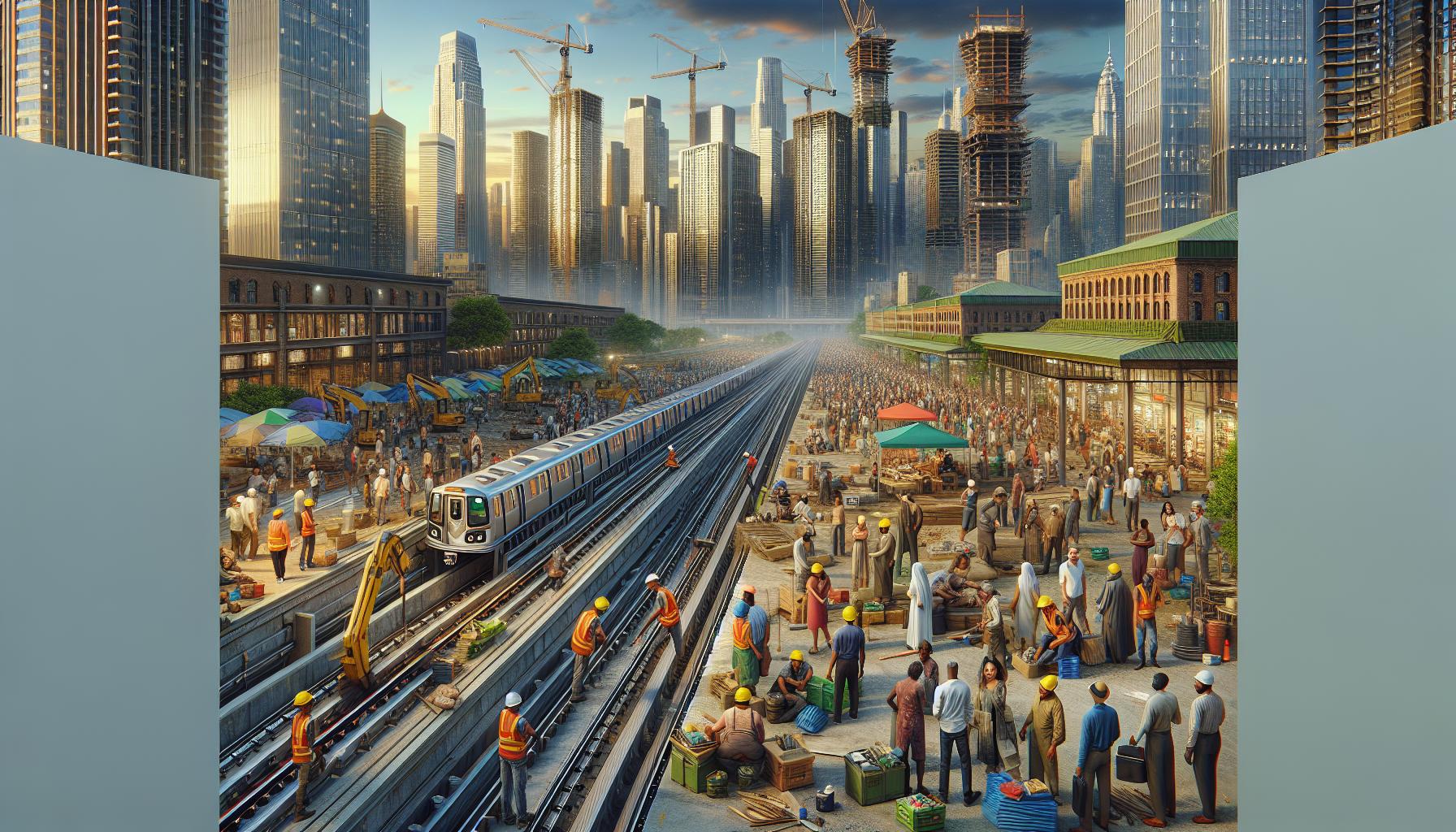Phone:
(701)814-6992
Physical address:
6296 Donnelly Plaza
Ratkeville, Bahamas.

Lima, Peru’s vibrant capital city continues to make headlines as a dynamic hub of South American culture, politics and economic development. From its historic colonial architecture to its modern business districts this coastal metropolis of 10 million residents regularly generates newsworthy stories that capture global attention.
Recent developments in Lima reflect the city’s ongoing transformation and challenges. The local government’s ambitious infrastructure projects urban renewal initiatives and efforts to preserve cultural heritage sites demonstrate Lima’s commitment to progress while honoring its rich history. Meanwhile the city’s renowned culinary scene environmental initiatives and technological advancements keep it at the forefront of regional innovation.
Lima’s political landscape has undergone significant changes in 2023, marked by shifts in government leadership and widespread civil demonstrations. The capital city continues to be the epicenter of Peru’s political dynamics, with key policy reforms and public responses shaping its current state.
Peru’s Congress approved 3 major municipal reform bills in September 2023, affecting Lima’s administrative structure. The Metropolitan Municipality of Lima implemented digital transformation initiatives for public services, including online permit applications and digital tax payments. Mayor Rafael López Aliaga launched a $500 million infrastructure investment program focusing on transportation and housing developments in Lima’s urban sectors.
| Policy Area | Implementation Date | Impact Scope |
|---|---|---|
| Digital Services | October 2023 | 2.5 million residents |
| Infrastructure | September 2023 | 43 districts |
| Municipal Reform | September 2023 | Citywide |
Civil demonstrations in Lima intensified during July-August 2023, with 15,000 protesters gathering in central Plaza San Martín. Key protest triggers include:
Police reported 25 organized protests in Lima’s historic center between June and September 2023. The Metropolitan Municipality established designated protest zones and implemented a new crowd management protocol in response to the demonstrations.

Lima’s economic landscape reflects significant growth with a 3.2% GDP expansion in Q3 2023 driven by infrastructure development retail growth. The capital city maintains its position as Peru’s primary economic engine generating 45% of the nation’s GDP.
Lima Metro’s Line 2 construction advances with 40% completion marking a $5.8 billion investment. The project includes:
The Port of Callao expansion project demonstrates progress with:
Foreign direct investment in Lima shows positive trends through strategic partnerships:
| Sector | Investment Amount (2023) | Growth Rate |
|---|---|---|
| Technology | $780 million | +15% |
| Retail | $450 million | +8% |
| Manufacturing | $620 million | +12% |
| Real Estate | $390 million | +6% |
Lima’s public safety landscape reflects ongoing challenges in urban security management with targeted responses from local authorities. The Metropolitan Municipality coordinates with national police forces to implement comprehensive security measures across the city’s 43 districts.
Lima’s crime rates show distinct patterns across different districts, with property crimes dominating incident reports. The National Police registered 45,000 criminal incidents in 2023, marking a 15% decrease from the previous year. Here’s a breakdown of reported crimes:
| Crime Category | Percentage | Annual Change |
|---|---|---|
| Property Theft | 42% | -12% |
| Street Robbery | 28% | -8% |
| Vehicle Theft | 18% | -22% |
| Other Crimes | 12% | -18% |
The city maintains 8,500 active police officers supported by 12,000 municipal security personnel (serenazgo) patrolling high-risk areas. Integration of 2,500 surveillance cameras with real-time monitoring systems enhances response capabilities in commercial zones.
The Metropolitan Municipality launched three key security programs in 2023:
Recent infrastructure improvements include:
The municipality allocated $120 million for security enhancements focusing on technology integration citizen engagement systems.
Lima continues its comprehensive environmental transformation with targeted initiatives addressing air quality management urban mobility sustainability. The city’s development framework integrates ecological preservation with infrastructure modernization targeting a 30% reduction in carbon emissions by 2030.
Lima’s air quality management system monitors 10 fixed stations across metropolitan areas recording real-time pollution data. The Metropolitan Municipality implemented strict vehicle emission standards reducing particulate matter by 25% since January 2023. Key measures include:
Lima’s transportation network undergoes significant expansion with $3.2 billion allocated to sustainable mobility initiatives. Current developments include:
| Project | Investment | Completion Date |
|---|---|---|
| Metro Line 2 Extension | $1.5B | 2024 |
| BRT Corridor Network | $450M | 2023 |
| Bicycle Lane Network | $120M | 2023 |
| Smart Traffic System | $80M | 2024 |
The Metropolitan Authority prioritizes:
These initiatives connect previously underserved neighborhoods improving mobility for 2.5 million residents while reducing average commute times by 35 minutes.
Lima’s cultural scene continues to thrive with an array of traditional festivals modified for post-pandemic celebrations alongside innovative tourism initiatives aimed at attracting international visitors. The city’s heritage sites reported a 25% increase in visitor numbers during Q3 2023.
The Festival of Santa Rosa de Lima takes center stage from August 23-30, 2024, featuring processions through Lima’s historic center. Mistura, Peru’s largest food festival, returns to Costa Verde in September 2024, showcasing 300 restaurants, food stalls, and culinary demonstrations. The Señor de los Milagros celebrations in October 2024 include four major processions through central Lima, with enhanced safety protocols accommodating 20,000 participants per procession.
| Festival | Date | Expected Attendance |
|---|---|---|
| Santa Rosa de Lima | Aug 23-30, 2024 | 50,000 |
| Mistura | Sep 5-15, 2024 | 400,000 |
| Señor de los Milagros | Oct 18-28, 2024 | 80,000 |
Lima’s tourism sector demonstrates strong recovery with 1.8 million international arrivals recorded in Q4 2023. The Metropolitan Municipality launched a digital tourism platform connecting visitors to 500 certified tour operators. Three new boutique hotels opened in Miraflores, adding 280 luxury rooms to the district’s accommodation capacity. The Lima Airport Partners completed terminal modernization projects, increasing passenger capacity by 35%.
| Tourism Metric | Q4 2023 | Growth vs Q4 2022 |
|---|---|---|
| International Arrivals | 1.8M | +45% |
| Hotel Occupancy Rate | 72% | +28% |
| Average Tourist Stay | 3.5 days | +0.8 days |
| Tourism Revenue | $890M | +38% |
Lima stands as a testament to Peru’s resilience and progress showing remarkable growth across multiple sectors in 2023. From significant infrastructure developments and economic expansion to environmental initiatives and cultural preservation the city continues to evolve while maintaining its rich heritage.
The capital’s commitment to sustainable development digital transformation and public safety has positioned it as a leading metropolis in South America. With ongoing projects ambitious goals and strong economic indicators Lima’s future looks promising as it balances modernization with cultural authenticity.
The city’s dynamic transformation serves as a model for urban development in Latin America demonstrating how traditional values and modern progress can coexist to create a vibrant metropolitan center.